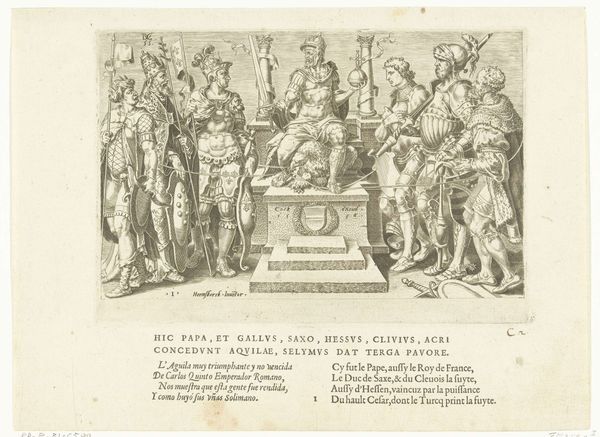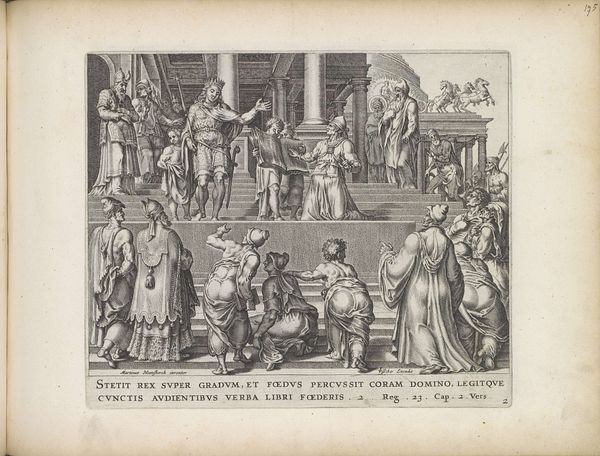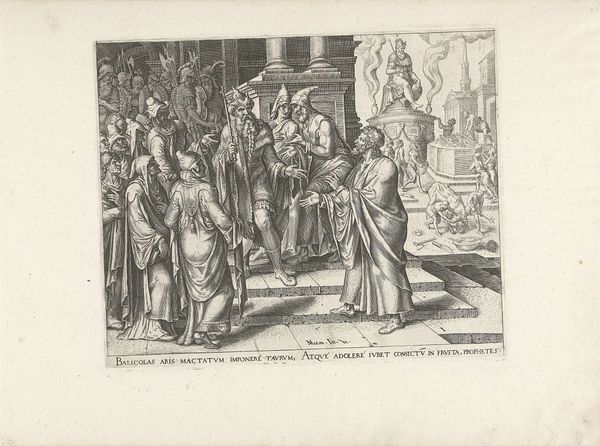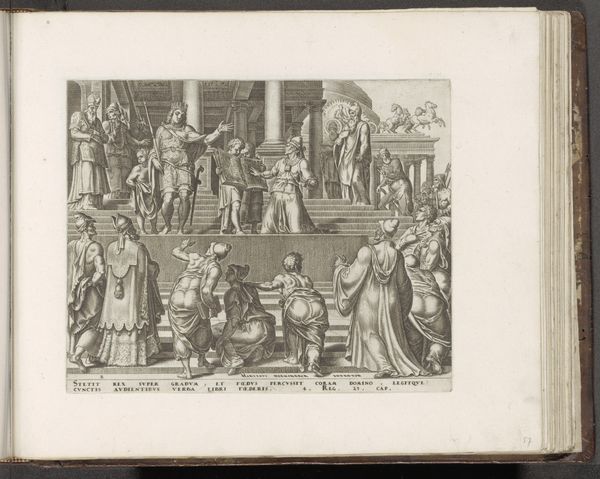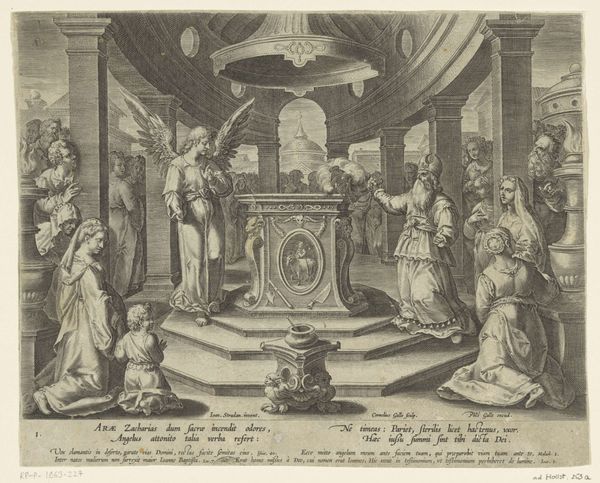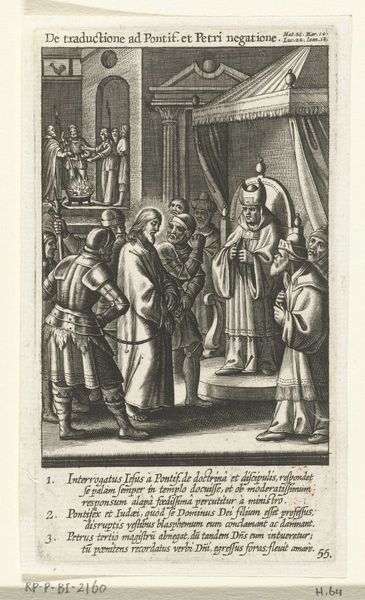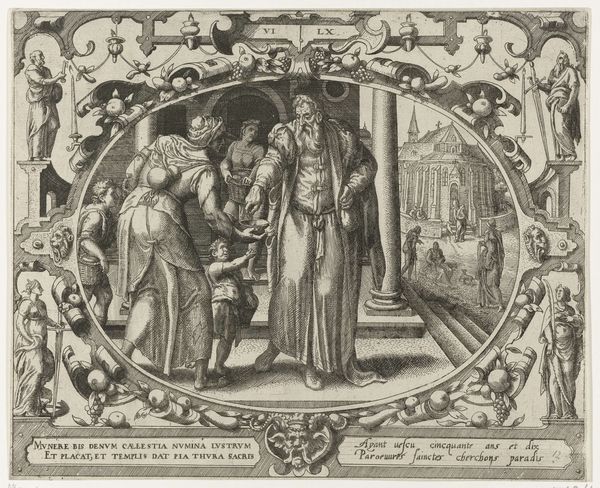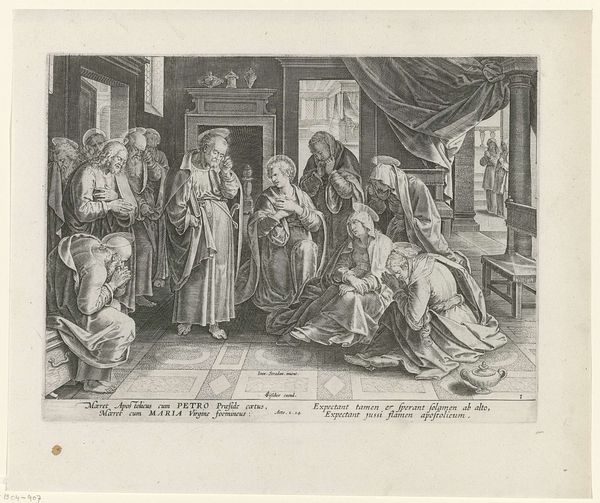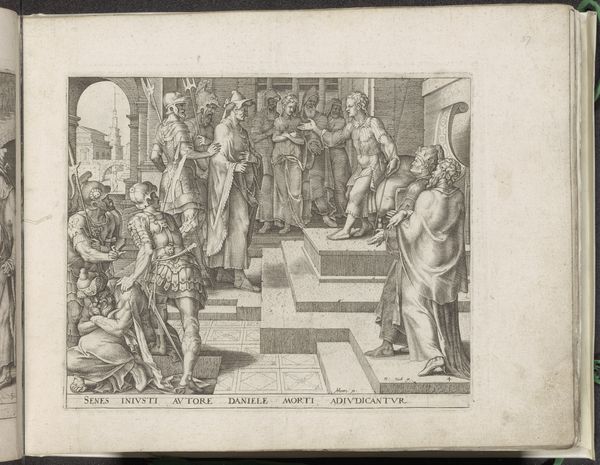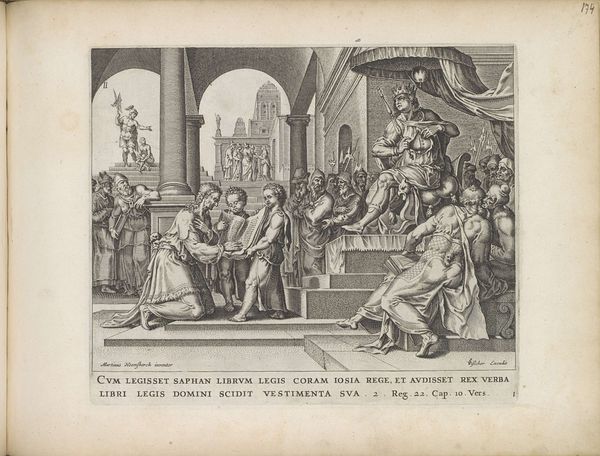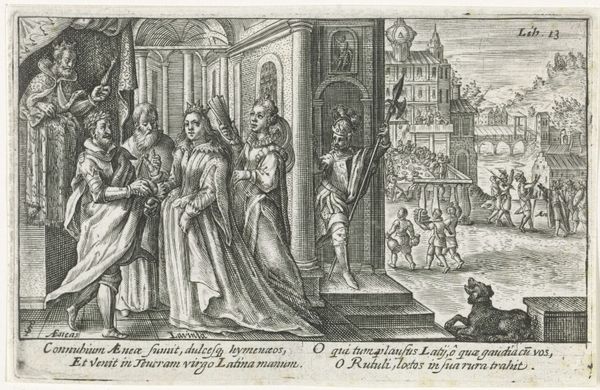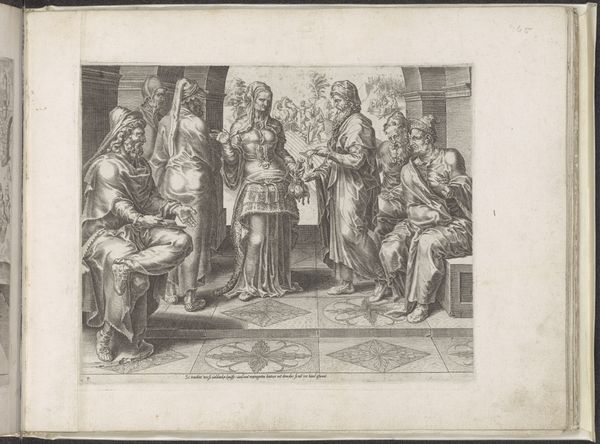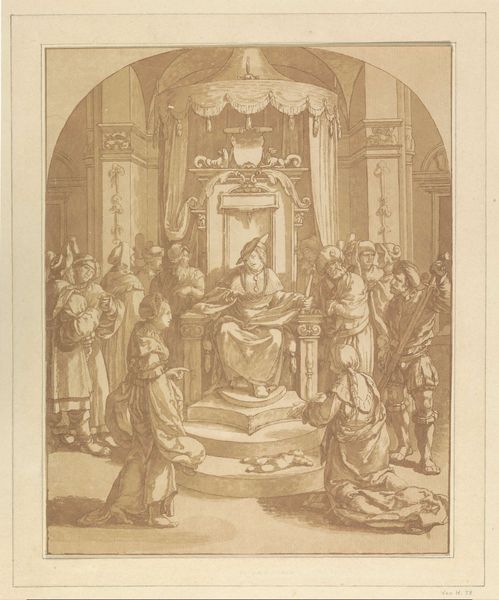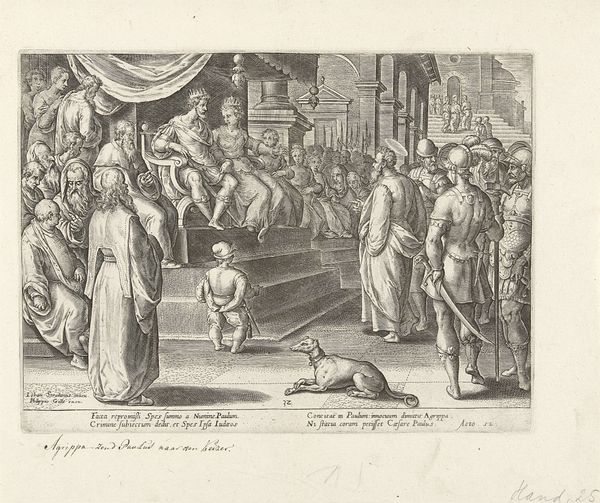
De onderwerping landgraaf Filips van Hessen, 1547, nr. 12 1555 - 1556
0:00
0:00
print, etching, engraving
#
portrait
# print
#
etching
#
mannerism
#
11_renaissance
#
history-painting
#
engraving
Dimensions: height 155 mm, width 230 mm, height 225 mm, width 305 mm
Copyright: Rijks Museum: Open Domain
Curator: Here we have "The Submission of Landgrave Philip of Hesse," a print from 1555-1556 currently residing here at the Rijksmuseum, crafted by Dirck Volckertsz Coornhert. It depicts a pivotal historical moment, doesn't it? Editor: It certainly does. My initial impression is one of stark formality; the rigid postures and hierarchical composition immediately convey power dynamics at play. The lack of color also accentuates the seriousness of the scene. Curator: Precisely. The engraving and etching techniques, typical of Mannerism, lend a graphic quality that emphasizes line and form over naturalism. Note the intricate details in the clothing and architecture; they serve as visual cues to status and authority. Editor: I'm drawn to the symbolic weight of Philip kneeling. Consider how such a public act of submission reinforced Charles V's imperial authority within the complex political landscape of the Reformation era. It's about imagery and consolidating power as much as the event itself. Curator: Indeed. The artist cleverly uses the spatial arrangement to highlight this dynamic. Charles V is elevated, literally and figuratively, enthroned and surrounded by his court, whereas Philip is relegated to a subservient position at his feet. Semiotically, this is powerful stuff. The gestures, the clothing, the expressions—all coded with meaning. Editor: And it speaks to the politics of image making. This isn't just about chronicling an event. It is crafting and disseminating a very specific narrative of imperial triumph. Prints like this one played a role in shaping public perception and legitimizing Habsburg rule. Consider how circulation influenced ideas. Curator: Without question. Coornhert skillfully utilizes the print medium to disseminate a very calculated message. The detailed linework and tonal variations serve not only to create a visually compelling image, but also to reinforce the underlying political message. The scene presents itself more compelling with Coornhert's decisions. Editor: It reminds us that even seemingly straightforward depictions of historical events are imbued with artistic choices reflecting broader social and political concerns. Thank you for elucidating the intrinsic connection between material expression and ideological meaning, which continues to hold significance in comprehending this historic piece. Curator: And thank you for reminding us of the socio-political forces influencing the artwork’s meaning and reception. That contextual approach emphasizes the vital public role the work plays in disseminating and reflecting narratives.
Comments
No comments
Be the first to comment and join the conversation on the ultimate creative platform.
